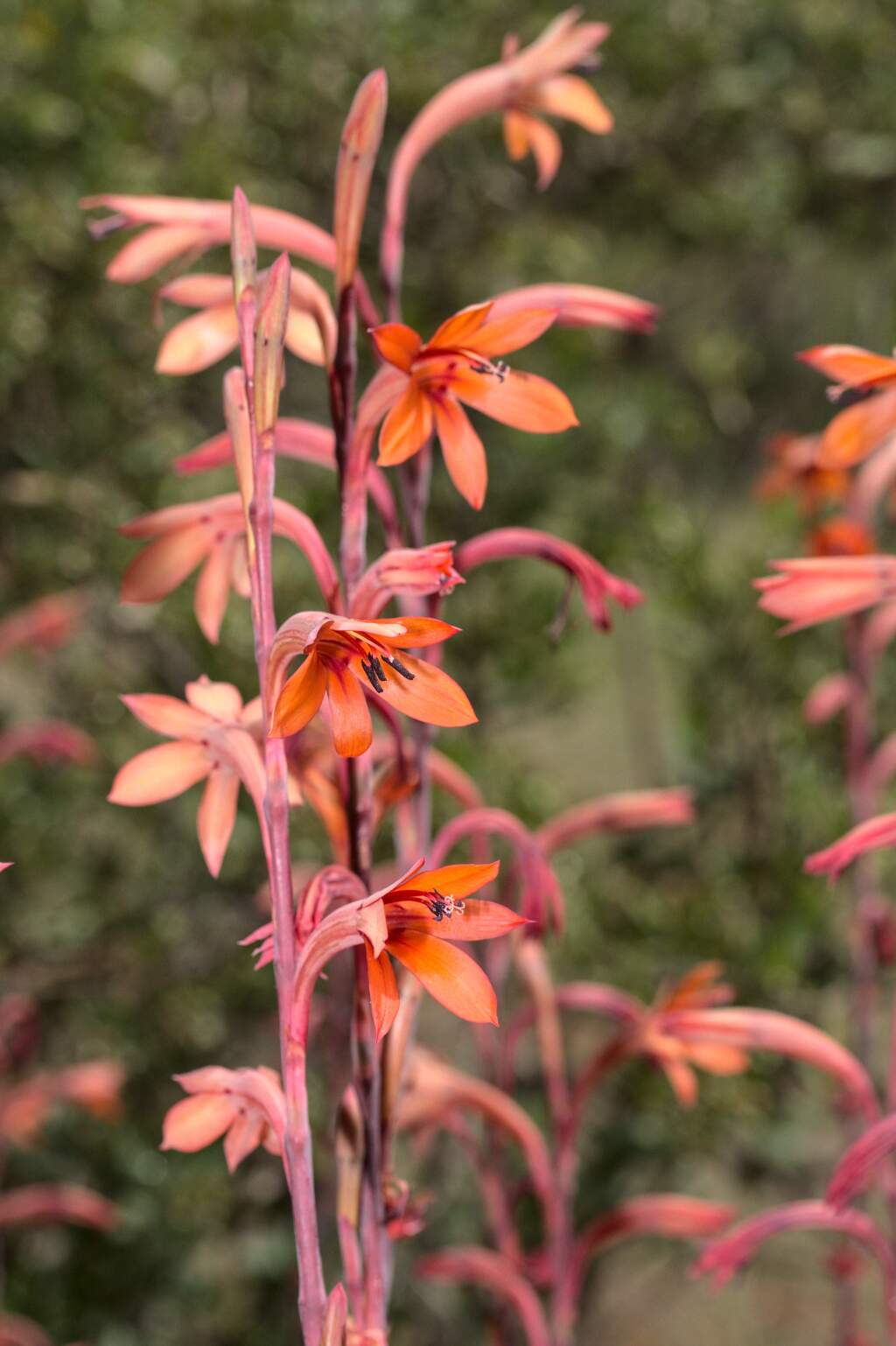Watsonia meriana var. bulbillifera
(J.W.Mathews & L.Bolus) D.A.CookeHerb 0.5–2 m high. Basal leaves 20–80 cm long. Inflorescence unbranched or with a few short branches, flowers 2.5–4 cm apart. Primary bracts 2.2–3.7 cm long, herbaceous; distally brown, dry and chartaceous. Flowers brick red to dull pink, zygomorphic. Perianth tube 3.2–4.2 cm long, curved; lobes 1.7–2.6 cm long, 8–12 mm wide. Stamens asymmetrically arranged to one side of the flower; anthers c. 10 mm long, cream-coloured to purple; staminodes absent. Style slightly longer than perianth. Capsule ovoid, 3–4 cm long. Bulbils present or absent. Flowers Oct.-Dec.
Wim, GleP, Brid, VVP, VRiv, GipP, OtP, WaP, Gold, CVU, GGr, DunT, NIS, EGL, EGU, HSF, HNF, OtR, Strz, VAlp. Also naturalised WA, SA, Qld, NSW, Tas.
Typical Watsonia meriana (less than 1 m high and never producing bulbils) has been reported only once, from heathland near Anglesea. The larger, bulbil-producing, Watsonia meriana 'Bulbillifera' (the Bulbil Watsonia) is the more common variant in Australia, and is a proclaimed noxious weed in most States of Australia. It is locally abundant as a weed of roadside, unimproved pasture and waste land. This sterile polyploid possibly originated as a sport introduced into cultivation; it has become a vigorous weed due to its exceptional capacity for vegetative reproduction.
 Spinning
Spinning



